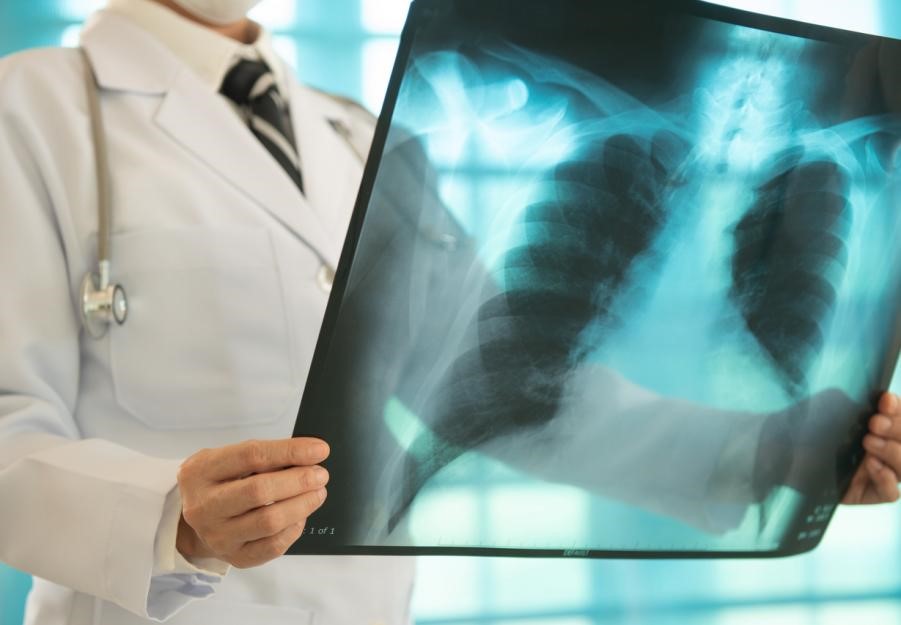Lung Cancer
Your Lifeline: Lung Cancer Treatment Options In Germany!!
According to the World Health Organization (WHO), Lung cancer is the leading cause of cancer-related deaths with the highest mortality rates. Obtaining a well-rounded understanding of the disease, encompassing its diverse aspects, such as its classifications, stages, risk factors, signs or symptoms, and the spectrum of available treatments, is paramount for those pursuing optimal healthcare solutions.
In recent years, Germany has emerged as a beacon of hope for individuals considering treatment abroad, offering advanced medical solutions and expertise.
What Is Lung Cancer?
Lung cancer, driven by uncontrolled cell division, results from mutations causing the growth of damaged cells and tumor formation. It can originate in the airways (bronchi or bronchioles) or tiny air sacs (alveoli) within the lungs, often maintaining its primary location despite potential spread from other sources.
Stages of Lung Cancer
Lung cancer staging is essential for treatment planning. It considers tumor size, tissue extent, lymph node involvement, and distant spread. The stages are:
- Stage 0 (In-situ): Limited to the lung lining, no spread.
- Stage I: Confined to the lung.
- Stage II: Larger or affecting lung lymph nodes or multiple lobe tumors.
- Stage III: Involves nearby structures or different lung lobes.
- Stage IV: Extensive spread to the other lung, fluids around the heart/lungs, or distant organs.

Different Forms Of Lung Cancer
Lung cancer showcases a broad spectrum of variations, yet its fundamental classification revolves around two principal categories below.
Other Additional Types:
In addition to NSCLC and SCLC, there are other lung tumors, such as:
● Carcinoid Tumors: These tumors are less common among lung tumors, make up less than 1% of cases, and are known for their slow growth rate.
● Lymphomas: Cancer in the lymph nodes around the lungs.
● Sarcomas: Cancer in the bones or soft tissues surrounding the lungs
Signs And Symptoms Of Lung Cancer
Lung cancer symptoms can often mimic those of less severe illnesses, and many individuals remain asymptomatic until the disease reaches advanced stages. Common symptoms include:
- Persistent cough
- Chest pain
- Shortness of breath
- Coughing up blood
- Unexplained weight loss
- Hoarseness
- Loss of appetite
- Fatigue
- Pain in the shoulder
- Swelling in the facial, neck, arm, or upper chest regions
- Reduced pupil size and a drooping eyelid in one eye are often accompanied by diminished sweating on that side of the face.
What Are The Causes Of Lung Cancer?
Smoking stands as the primary culprit behind lung cancer, responsible for a staggering 90% of cases, with secondhand smoke exposure emerging as another substantial risk factor.
Other factors include radon, asbestos, pollutants, family history, genetic mutations, and chest radiation. Notably, 20% of lung cancer patients never smoked, underlining the need for early screening
Diagnosis Of Lung Cancer
Diagnosing lung cancer is a multi-step process, usually involving a combination of methods. Healthcare providers begin by listening to symptoms, reviewing medical history, and performing a physical exam. Diagnostic steps may include blood tests, chest X-rays, CT scans, and a biopsy for confirmation.
Takeaway
To sum up, lung cancer is a complex ailment necessitating a deep understanding of its nuances, from types and stages to symptoms, causes, and treatment choices. Germany’s medical expertise provides a promising path to better health. By staying informed and considering international treatment, individuals can take control of their lung cancer journey.
